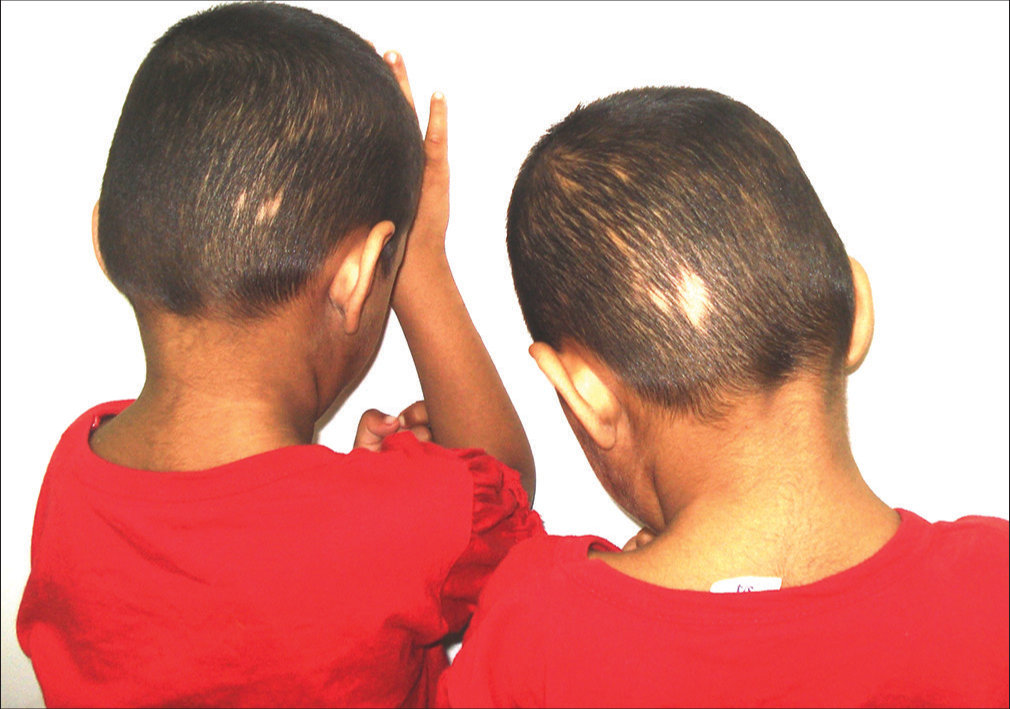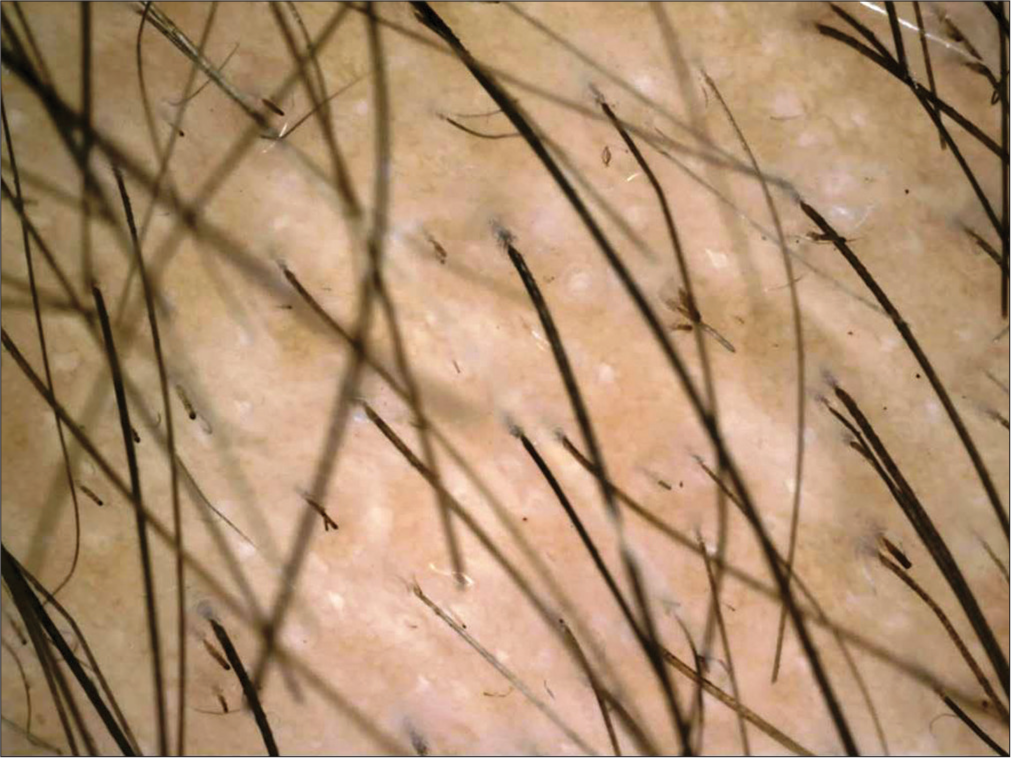Translate this page into:
Mirror-image alopecia areata in mirror-image twins

*Corresponding author: Shikha Verma, Department of Dermatology and STD, North Eastern Indira Gandhi Regional Institute of Health and Medical Sciences, Shillong, Meghalaya, India. shikha.b.thakur@gmail.com
-
Received: ,
Accepted: ,
How to cite this article: Verma S, Thakur BK. Mirror-image alopecia areata in mirror-image twins. CosmoDerma. 2024;4:43. doi: 10.25259/CSDM_40_2024
Dear Sir,
Mirror-image twins are a fascinating type of identical twins. This phenomenon occurs when the egg splits later, around 9–12 days after conception, and the genes that determine the right and left side of the embryo have already activated. This results in some of the physical features developing on the opposite side like a mirror image. Various mirror-image lesions are described in mirror-image twins.[1,2]
Alopecia areata (AA) is a non-scarring patchy hair loss caused by T-cell mediated autoimmune phenomenon in genetically predisposed persons. There are several case reports of AA in identical twins.[3,4] However, mirror-image AA has never been reported in the literature. We hereby report a case of mirror-image AA in mirror-image twin sisters.
Two 6-year-old identical twin sisters presented to us with asymptomatic, well-circumscribed, and patchy hair loss on the scalp for 15 days. The mother noticed hair loss in both girls at the time of the haircut. The children were born out of a non-consanguineous marriage. Both the sisters were healthy and vaccinated as per the Indian Association of Pediatrics guidelines. There was no similar history in family members. Genetic testing to ascertain monozygosity was not done due to financial constraints. On examination, there were multiple, well-circumscribed, and small patches of alopecia on the right side of the occipital scalp in child 1 and the left side of the occipital scalp in child 2 [Figure 1]. The underlying scalp was normal looking without any redness or scaling. Potassium hydroxide mount for fungal hyphae was negative. Dermoscopy revealed yellow dots, black dots, broken hair, exclamation marks hair, and short vellus hair [Figure 2]. Treatment was given in the form of topical mometasone 0.1% lotion. The AA is a complex disease with both genetic and environmental factors playing a role in its etiopathogenesis. HLA-DQB1*0301 and HLA-DRB1*1104 have been strongly associated with AA. Rodriguez et al. reported a 55% concordance rate of AA in monozygotic twins.[5]

- Mirror-image alopecia areata on the occipital scalp of twins.

- Yellow dots, black dots, broken hair, exclamation marks hair, and short vellus hair on dermoscopy.
The simultaneous development of AA on identical sites is described earlier.[3,4] However, the monozygotic twins in our case developed mirror-image AA on the occipital scalp at the same age. This is probably the first ever case report of mirror-image AA in mirror-image twins.
Ethical approval
The Institutional Review Board approval is not required.
Declaration of patient consent
The authors certify that they have obtained all appropriate patient consent.
Conflicts of interest
There are no conflicts of interest.
Use of artificial intelligence (AI)-assisted technology for manuscript preparation
The authors confirm that there was no use of artificial intelligence (AI)-assisted technology for assisting in the writing or editing of the manuscript and no images were manipulated using AI.
Financial support and sponsorship
Nil.
References
- Identical twins with “mirror image” anisometropia and esotropia. Srp Arh Celok Lek. 2011;139:661-5.
- [CrossRef] [PubMed] [Google Scholar]
- Mirror-image tumors in mirror-image twins. Chest. 1994;106:608-10.
- [CrossRef] [PubMed] [Google Scholar]
- Identical alopecia areata in identical twin sisters. Int J Trichol. 2020;12:247-8.
- [CrossRef] [PubMed] [Google Scholar]
- Two episodes of simultaneous identical alopecia areata in identical twins. Int J Trichol. 2016;8:47-8.
- [CrossRef] [PubMed] [Google Scholar]
- Concordance rate of alopecia areata in identical twins supports both genetic and environmental factors. J Am Acad Dermatol. 2010;62:525-7.
- [CrossRef] [PubMed] [Google Scholar]





